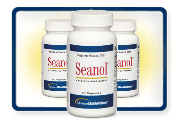Reactive Oxygen Species Scavenging, metal Chelating, Reducing Power and Lipid Peroxidation Inhibition
Ecklonia Cava Extract (ECE) is a standardized natural complex of unique marine molecules that originate from a specific species of brown algae (Ecklonia cava). ECE represents a unique category of polyphenols often called phlorotannins. Their unique polyphenolic structure endows them with biological activities that are not found in land-based plants.
ECE naturally occurs as high-molecular weight tannin (Mw> 2,000 Dalton) and low-molecular weight tannin (Mw=400-1000 Dalton). ECE can be classified into four types depending on the ratio of high molecular weight and low molecular weight tannins. Various physiological activities of ECE have been evaluated in vitro, in vivo and clinically as individual compounds (ECE1-ECE14) and complex forms (ECE, Type I-IV).
Millions on Research
Dr. Haengwoo Lee and his team of M.D.’s and Ph.D.’s have spent over thirty million dollars on research, from in vitro to animal and human studies. Much of the work was done in Korea, and some at the University of Washington. ECE has been found to be an impressive therapeutic agent in a wide array of clinical applications.
SUPER ANTIOXIDANT
The power of an antioxidant is determined by its structure, which is made up of rings. These rings capture stray electrons from free radicals. Most flavonoids generally have three interconnected rings. ECE has up to eight interconnected rings, making its free-radical scavenging ability 10-100 times more powerful than other polyphenols. It is substantially more powerful than green tea catechins, which only have four rings.
Multiple Antioxidant Profiles of ECE
ECE’s antioxidant activities against various reactive oxygen species have been confirmed to be highly potent in physiologically relevant concentrations. The effective dose of ECE for free radical scavenging is in the 10-20 µg/mL range which belongs to most potent families of natural antioxidants. ECE itself and its individual compounds have demonstrated potent reducing power and radical scavenging activities against DPPH radical, oxidized LDL and peroxynitrite.*
 Much Longer Half-Life Much Longer Half-Life
ECE is a unique polyphenol in that it has a very long half-life in the body. This is because ECE is a marine-based polyphenol which is 40% fat-soluble. Virtually all other polyphenols are derived from land-based plants and are water-soluble. The half-life of ECE is up to 12 hours, compared to 30 minutes for water-soluble, land-based polyphenols. ECE has the ability to cross the blood-brain barrier.
The Research of Martin Pall, Ph.D.
Peroxynitrite is the most notorious of the free radicals incriminated by Martin Pall, Ph.D.’s groundbreaking research on multiple chemical sensitivity, fibromyalgia, chronic fatigue syndrome, post traumatic stress disorder, Gulf War syndrome, and fourteen other conditions. Peroxynitrite plays a main role in Dr. Pall’s mechanism, along with NF-kappaB and other inflammatory mediators. ECE also reduces tissue specific NF-kappaB.
Complementary and Full Article available at http://truthspace.wordpress.com/2008/02/09/ecklonia-cava-extract-super-antioxidant-beyond/ |





